The demise of Scottish football's programmes: Dundee Utd join Hibs, 'five-figure' sums, plea to keep buying them
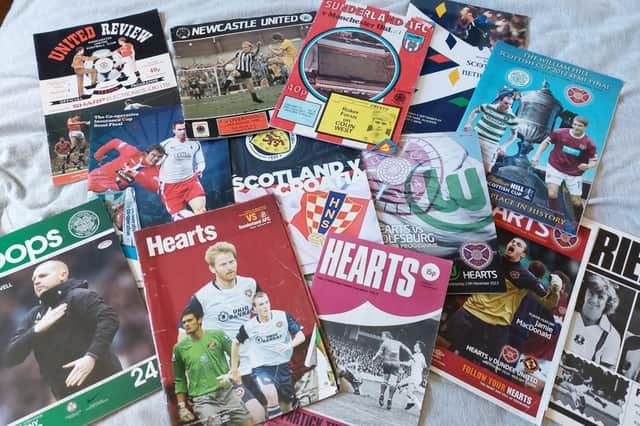

“Match programmes – get your match programmes here!” It has been an integral part of the match-day experience for supporters. At Tannadice, this seems especially the case, given United were among the last clubs to ditch the half-time scoreboard, when you matched up the scorecard in your programme with the letters visible on a board in the corner of the ground to discover the state of play elsewhere. But that went sometime in the late 1980s, just as the large Skol/TSB corner advertising hoardings, another feature synonymous with great days at Tannadice, are redolent of another era.
It’s now time to sound a lament for the matchday programme, which is finding it harder to survive rising print costs, supporter apathy and growing concern about the environment. Dundee United – who produced the first regular colour publication in Scotland – are the latest club to review the programme's relevance in the modern game.
Advertisement
Hide AdAdvertisement
Hide AdWho needs a glossy brochure costing several pounds containing a disinterested manager's welcome to “today’s visitors” and squad lists from which the reader must assemble the teams? Too few people, United concluded. Worse, producing it was costing the club a “five figure sum” they claimed, with sales as low as 200 in some instances.
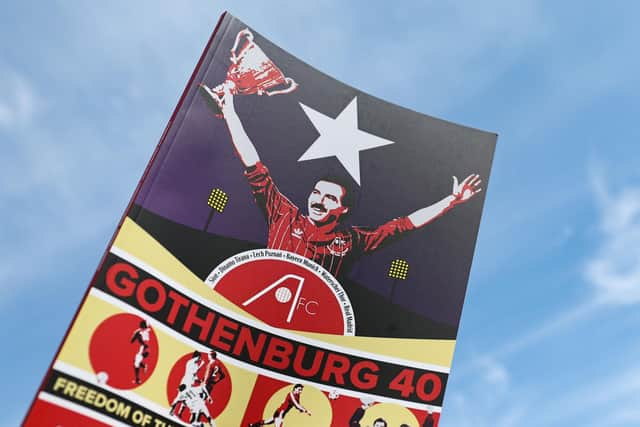

One easily identifiable problem is the number of copies given away free with hospitality. But then a nice new shiny programme sitting next to a place mat is one of the joys of such occasions – as well as having the time to cast an eye over articles between courses. Diners will miss them.
The lack of a match programme might not feature high in the list of things to worry about for Dundee United fans at present. And yet, it does feel significant, just as it felt significant when Hibs suddenly announced they were stopping issuing a programme completely at the end of the 2021-22 season.
The Easter Road club attributed this to their new greener outlook. Piles of unsold glossy magazines didn’t square with their green ideals. United, too, cited this reason. In a statement last week, the Tannadice club explained that “the move is part of a wider Scottish football initiative towards environmental sustainability".
Hence why there was no programme on sale at Tannadice last week. Nor was there one on sale at their latest Viaplay Cup clash against Peterhead yesterday. Peter Rundo first edited the matchday programme aged 18 in 1967. He has been involved in some form in every issue since 1978. He started with a bang since his debut was United’s 1-0 win over Juventus in the Fairs Cup. He also enjoyed the privilege of transcribing Jim McLean’s rarely mundane thoughts for his manager’s column for ten years.
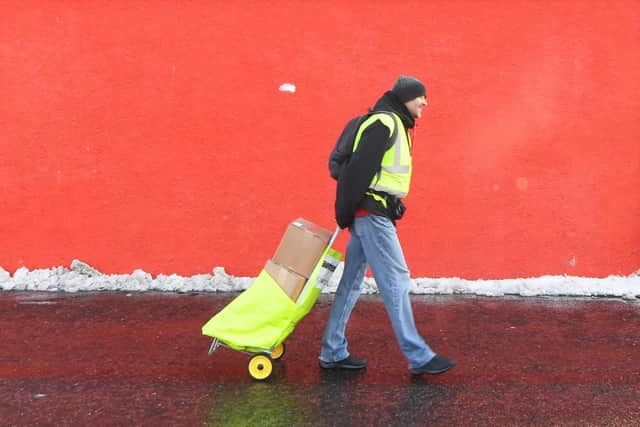

A timely feature in the current issue of Nutmeg, the Scottish football periodical, focuses on these pieces of art, described by Greg Gordon, author of the piece, as an "ongoing monologue with the club's fans". These fortnightly musings remain an incredible resource for historians and students of the game.
Rundo, meanwhile, is naturally disappointed at the halting of matchday sales but happy that a printed version is being offered on a made-to-order basis from Curtis Sport, the UK’s leading sports programme publisher. “It’s vital collectors still have this recourse,” he says. Otherwise each edition will only be available to flick through online.
Prior to confirmation of this hybrid model it was feared there would be nothing at all, which sparked an interesting debate on Twitter. Journalist and United fan Niall Harkiss registered his disappointment. Others contributed to a thread that neatly encapsulated the on-going debate about programmes.
Advertisement
Hide AdAdvertisement
Hide AdSome were narked, others seemed not too fussed. But it’s guaranteed that if you slip a programme from their team's title run in 1982-83 in front of a United fan their eyes will light up. The design was even replicated on the front cover of last season’s programme, which has turned out to be the last season they were made available on a match day by United – as it stands. Clubs can always reconsider.
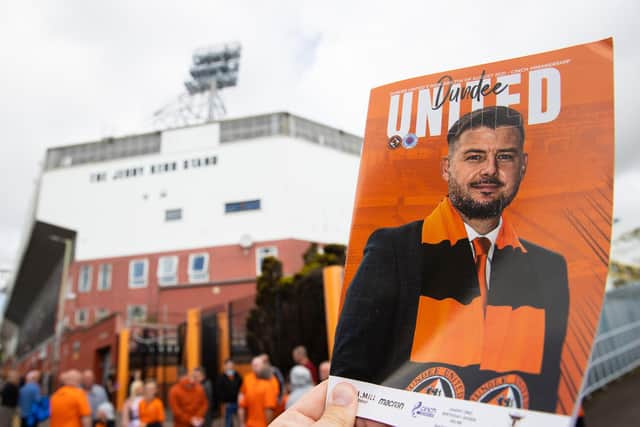

Partick Thistle, for example, are expected to restore their printed programme for the first league home game of the season against Raith Rovers on 5 August. The Firhill club’s last printed programme was for a Championship clash against Falkirk in April 2021.
Such news is welcome. Jim Thomson once sold Stirling Albion programmes outside Annfield and now contributes to the same publication, sales of which were given a boost by the club’s League 2 title triumph last season. Now 50, he runs Scottish football programme fairs all over the country having re-engaged with his old interest. “I was lost to the hobby for years,” Thomson says. “I always collected when I was younger.
“During lockdown I fell back into it. I was clearing out my loft and I found all my old programmes, and wondered if it was still a thing. Much to my surprise, as much as social media had killed a lot of it, it was also helping keeping it alive. On Facebook there’s pages devoted to Scottish football programmes, mostly buying and selling.”
But fresh input is needed. “Clubs need to be innovative if they want a younger generation to buy the programme,” stresses Thomson. He mentions the routinely excellent Aberdeen programme, among the biggest sellers in Scotland, for imaginative ideas, such as giving stickers away with each issue.
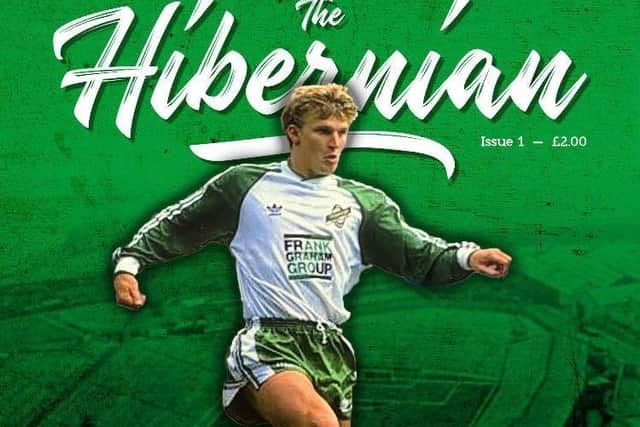

As so often happens, fans are left to take up the slack. After a several weeks of programme-less matchdays, some Hibs supporters clubbed together to produce an unofficial publication with the aim of filling the match programme gap. “They (the club) have been quite supportive of our efforts,” says Stephen Young. “We have them onside. Hibs as a club are not anti-programme. They just want to be seen as the greenest club in Scotland, so they took that choice (of discontinuing).”
The first fans’ produced effort – The Hibernian – came out for a game against Motherwell last October. Their mission statement is simple. “If there’s a home game at Easter Road, we will make sure there’s a programme produced,” says Young.
The one for Friday night’s friendly against Groningen featured former player Gareth Evans on the front and an interview with John Burridge, the former goalkeeper. It’s not solely for the delectation of oldies, however. There is up to date information on the opposition, which presents a challenge for editor Eddie Henry in the case of Hibs’ next opponents – Inter Club d’Escaldes of Andorra.
Advertisement
Hide AdAdvertisement
Hide AdThe programme costs just £2 and is produced on a non-profit basis, with proceeds going to charities supported by the Hibernian Community Foundation. “We have produced for every home game since that Motherwell game, including a couple of friendlies,” notes Young. It’s available at several outlets, including the club shop as well as the Football Programme shop, the long-established and much cherished emporium on Easter Road. It’s also on sale outside the ground on matchdays, with a print run of 400 often not enough to satisfy demand.
“It is early days yet,” says Young. “We don’t want to get too big for our boots and be left with lots of back issues," says Young. Something else they are careful about is abuse. It’s not a fanzine. “We made a commitment to the club that we wanted it to be like a match programme,” says Young. “We were not going to be abusive about the club – or our opponents for that matter. We try to keep it above board and as official-looking as possible.”
Thomson applauds their efforts. “You need someone at the club who is passionate about putting the programme together,” he says. There is no better example than Rundo, who was busy writing copy for the new era of United programme when Scotland on Sunday caught up with him last week. Now in his 70s, he still gets a thrill from discovering a rare edition – he recently got his hands on Dundee United v Dumbarton, from October 1946. “United programmes from 1946-47 are ultra-rare,” he says. “My eyes nearly popped out my head – I hadn’t even seen one before.”
It's a reminder of the beauty of something tangible. Stuart Curtis, the owner of Curtis Sport, is not a fan of digital programmes, though he will work with clubs who decide to go down that route. “What was the last digital programme you bought or read?” he asks. “’Not many people will say, ‘Well actually, I have a library of about 12,000 of them’.”
He’s devoted to printed programmes, which is why his company produces them for over 40 teams north and south of the Border. He implores clubs to put the effort into maintaining them – and stresses that it really isn't hard to make them economically viable. “Even if you don’t use Curtis Sport, that’s fine,” he says. “But please, have a programme, whether 40 buy them or 40,000. It’s important to keep it going.”
Curtis is putting his money where his mouth is. His company is now sponsoring the Scottish Programme and Memorabilia Fair. Where’s the next-but-one event due to be held? Dundee, ironically – for the first time this millennium.
Comments
Want to join the conversation? Please or to comment on this article.